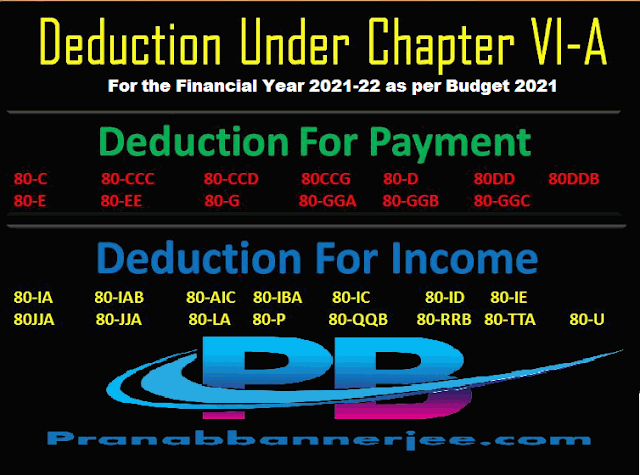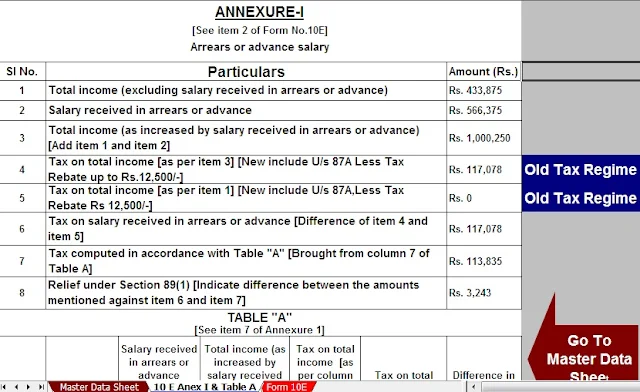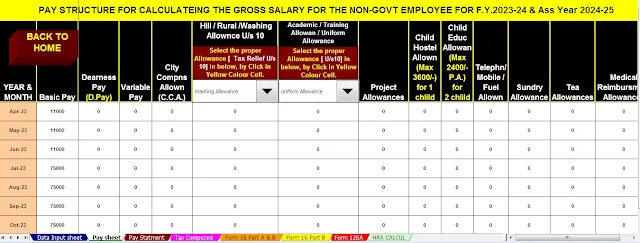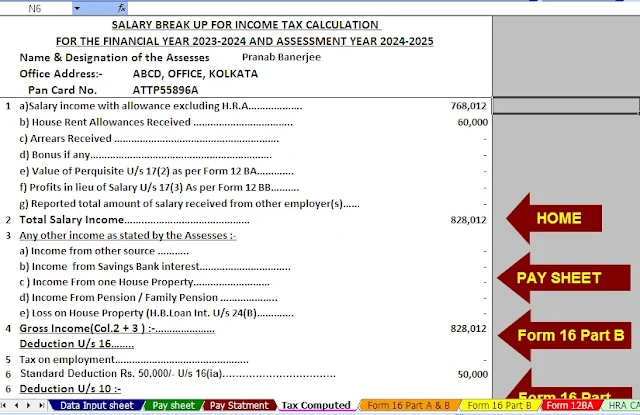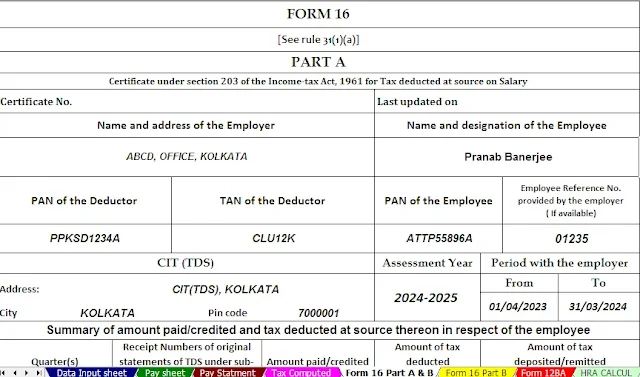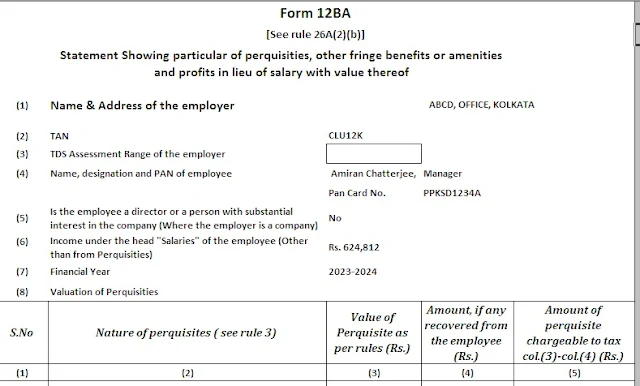In today's world, financial planning is crucial, and understanding your tax liability is a fundamental
aspect of it. As a non-government employee, it's essential to be aware of how income tax works,
especially with the ever-evolving tax laws and regulations. This article aims to provide you with a
comprehensive guide to an all-in-one income tax calculator tailored specifically for non-government
employees for the financial year 2023-24.
Table of Contents
• Introduction
• Understanding
Income Tax
• Components
of Income Tax Calculation
• Gross
Income
• Deductions
• Taxable
Income
• Tax
Slabs
• Rebates
and Credits
Using the Income Tax Calculator
• Step
1: Entering Your Gross Income
• Step
2: Deductions
• Step
3: Taxable Income
• Step
4: Calculating Tax Liability
• Step
5: Rebates and Credits
FAQs about Income Tax Calculation
• When
do I need to submit my income tax returns?
• Can I
claim deductions on home loan interest?
• How
can I legally lower the amount of income I have to pay taxes on?
• What
occurs if I don't submit my taxes by the deadline?
Let's dive into the nitty-gritty details of income tax
calculation for non-government employees.
Introduction
Before we delve into the intricacies of calculating
income tax, let's start with the basics. Income tax is a mandatory financial
contribution that individuals and businesses make to the government. This
revenue is used to fund various public services and infrastructure development.
Understanding Income Tax
Income tax is figured out by looking at how much money
you make in a year as non-government employees, this includes your salary,
business income, rental income, and other sources of income. To calculate your
income tax liability accurately, you need to consider several components.
Components of Income Tax Calculation
Gross Income
Your gross income is the total income you earn before
any deductions or exemptions. It includes your salary, rental income, business
income, and any other sources of income. To calculate your income tax, you'll
start with your gross income.
Deductions
Deductions are specific expenses or investments that
you can subtract from your gross income. These deductions reduce your taxable
income, ultimately lowering your tax liability. Common deductions include
contributions to provident funds, life insurance premiums, and investments in
tax-saving instruments.
Taxable Income
Once you've deducted eligible expenses from your gross income, you arrive at your taxable income. This is the amount on which you will calculate your income tax.
Tax Slabs
Income tax in most countries is progressive, meaning
the more you earn, the higher the tax rate you pay. Tax slabs are different
income ranges, each with its tax rate. As your income increases, you move into
a higher tax slab.
Rebates and Credits
Rebates and tax credits are incentives provided by the government to encourage specific behaviors, such as investments in certain sectors or savings in specified instruments. These actions can make your tax bill smaller.
Using the Income Tax Calculator
Now that you have a basic understanding of the components, let's explore how to use the all-in-one income tax calculator for non-government employees for the financial year 2023-24.
Step 1: Entering Your Gross Income
Begin by entering your gross income into the calculator. This should include your salary, rental income, business income, and any other income sources. Ensure accuracy in this step, as it forms the foundation of your tax calculation.
Step 2: Deductions
Next, you will need to enter the deductions you are eligible for. This could include contributions to provident funds, life insurance premiums, and any other applicable deductions. The calculator will subtract these deductions from your gross income to arrive at your taxable income.
Step 3: Taxable Income
Once you've entered your deductions, the calculator will automatically calculate your taxable income. This is the amount on which your income tax liability will be determined.
Step 4: Calculating Tax Liability
Now comes the crucial step—calculating your income tax liability. The calculator will use the tax slabs applicable to your taxable income to determine how much tax you owe to the government.
Step 5: Rebates and Credits
Finally, the calculator will factor in any rebates or
tax credits that you are eligible for. These can really help you pay less in
taxes
FAQs about Income Tax Calculation
Q: When do I need to submit my income tax?
A: The due date for filing income tax returns varies
from country to country. In most cases, it falls between July and September
after the end of the financial year. It's essential to check your country's tax
department website for the exact due date.
Q: Can I claim deductions on home loan interest?
A: Yes, you can claim deductions on the interest paid
on your home loan under certain conditions. However, the rules for this
deduction may vary, so it's advisable to consult a tax expert or refer to your
country's tax regulations for specific details.
Q: How can I reduce my taxable income legally?
A: You can reduce your taxable income legally by
taking advantage of deductions and exemptions provided by the government.
Contributing to provident funds, investing in tax-saving instruments, and
making charitable donations are some common ways to reduce your taxable income
.
Q: What occurs if I miss the tax filing deadline?
A: Missing the tax filing deadline can lead to
penalties and interest on the unpaid tax amount. It's crucial to file your tax
return on time to avoid these consequences. If you have missed the deadline,
it's advisable to file your return as soon as possible and pay any outstanding
taxes along with the penalties, if applicable.
In conclusion, understanding and calculating your
income tax as a non-government employee is vital for financial planning. The
all-in-one income tax calculator for the financial year 2023-24 simplifies the
process and helps you determine your tax liability accurately.
Features of this Excel Utility:-
1) This
Excel utility prepares and calculates your income tax as per the New Section
115 BAC (New and Old Tax Regime)
2) This
Excel Utility has an option where you can choose your option as a New or Old Tax
Regime
3) This
Excel Utility has a unique Salary Structure for Non-Government Employee’s
Salary Structure.
4) Automated
Income Tax Form 12 BA
5) Automated
Income Tax Revised Form 16 Part A&B for the F.Y.2023-24
6) Automated
Income Tax Revised Form 16 Part B for the F.Y.2023-24

